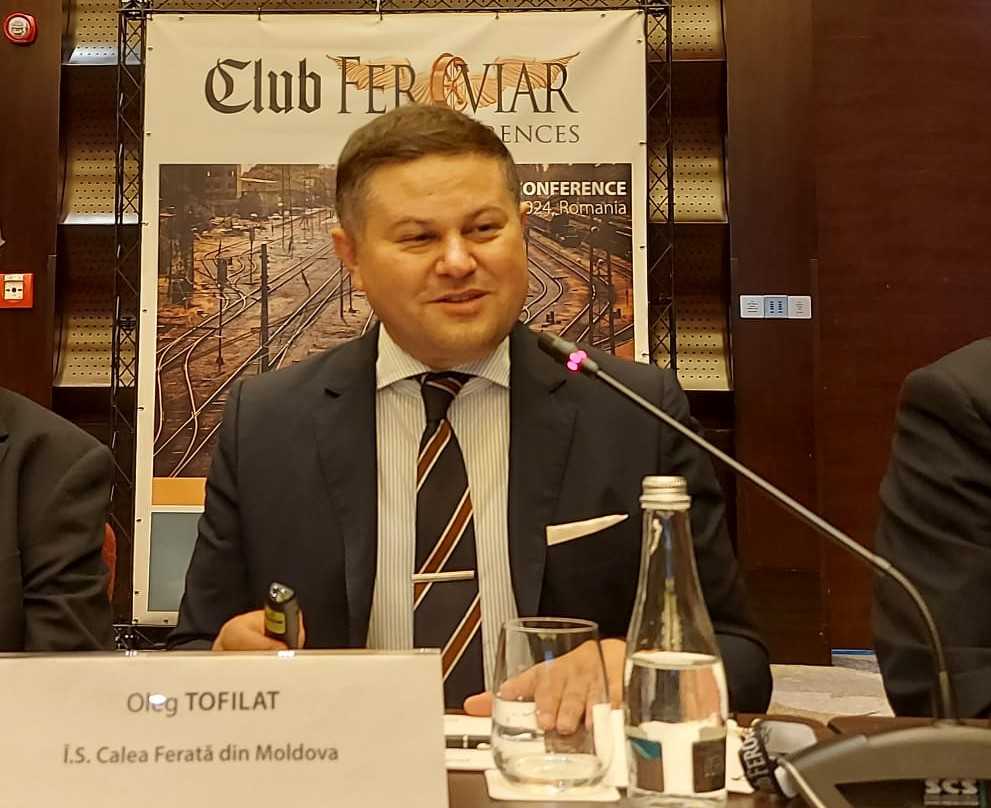 Moldovan Railways needs a EUR 475 million investment to renew its freight rolling stock through the acquisition of new freight wagons and shunting locomotives to meet future traffic demand and increase rail’s modal share.
Moldovan Railways needs a EUR 475 million investment to renew its freight rolling stock through the acquisition of new freight wagons and shunting locomotives to meet future traffic demand and increase rail’s modal share.
According to Oleg Tofilat, the Director General of Calea Ferată din Moldova (Moldovan Railways – CFM), the company needs to acquire more than 4,000 freight wagons estimated between EUR 80,000 and EUR 100,000 per vehicle, totalling a EUR 350 – 400 million investments. This project is expected to be carried out from 2024 and be completed in 2026.
The company also plans to purchase 25 to 30 shunting locomotives estimated at costs of EUR 62.5 – 75 million with EUR 2.5 million for each vehicle. This project is also planned to be implemented from 2024 until 2025.
“Rail freight market share has increased, and we are facing limitations due to the outdated rolling stock. The war has been put pressure on our railway system as we had to answer freight mobility needs and to ensure especially grain transport from Ukraine,” Oleg Tofilat said during the Railway Days Investment Summit held in Bucharest on 17 – 18 October 2023.
Rail freight transport increased by 3.2 million tonnes in 2022 – 2023, reaching 5.6 million tonnes, from 2.3 million in 2020. The largest increase was registered on the ore segment reaching 1.2 million tonnes in 2022 – 2023, from 100,000 tonnes in 2020. Grain transport also increased by 560,000 tonnes, reaching 800,000 tonnes from 240,000 tonnes in 2020. Calea Ferată din Moldova recorded freight increase on all relevant segments including fuel, construction material and metals.
Currently, CFM owns 21 mainline locomotives and estimates that 10 additional such locomotives are required to meet transport demand and provide better services. The company also operates with 27 shunting locomotives and 12 additional vehicles are needed on short term. For transshipment activities between 1435mm and 1520 mm rail gauge tracks, the company uses 280 bogies and needs 200 additional bogies.
The modernisation of rail infrastructure is also important for CFM to increase rail transport attractiveness as currently 40% of the network is facing speed and load limitations. The Republic of Moldova has a rail network of 1,071 km, of which 411 km (190 rail sections) is facing speed restrictions.
To modernise the 108 km Central corridor, between Chişinau and Ungheni, the company needs EUR 70 – 75 million investments. The financing would be delivered by the French Government and a Memorandum of Understanding has been signed by CFM and Alstom.
The modernisation of the Southern corridor between Tighina and Giurgiuleşti, is ongoing with financing provided by the European Bank for Reconstruction and Development (EBRD) and the European Investment Bank (EIB). The upgrade of the 297 km railway line is estimated at EUR 113 – 160 million.
Moldovan Railways plans modernise the 95 km Tighina – Chişinău – Căinari line estimated at EUR 45 million and the 392 km Northern corridor between Ungheni, Bălţi, Ocniţa an Râbniţa whisi is estimated at EUR 147 million. For these two projects the financing is currently unidentified.
In May 2023, the EBRD and the European Commission approved a financial package of EUR 20 million for two key rail sections on North – South rail corridor. the EBRD will lend Moldova EUR 23 million and the EC will cover the remaining EUR 28 million of the total estimated costs of EUR 71 million.
The project will contribute to the development of transit potential and improved regional rail infrastructure through the upgrade in the first phase the Vălcineț – Bălţi – Ungheni section and then, in a second phase of works, on the Chişinău – Căinari section of the corridor. this project will also increase food security and facilitate Ukrainian exports to reach the Port of Constanţa at the Black Sea, as well as ports in Romania, Moldova and Ukraine, at Galati, Reni, Ismail and Giurgiuleşti.
In addition, the Director General of Calea Ferată din Moldova also said that the company wants to build a terminal network, two of the facilities located in Chişinău. The Modern Logistics Hub in Chişinău is designed as a Free Economic Zone to attract the flow of goods for the Republic of Moldova, from the Port of Odessa. The terminal has a potential to handle 3 – 4 million tonnes each year.
A specialised container terminal in Chişinău will attract the flow of containerised goods with a monthly capacity of 1,000 – 1,200 containers of 20 tonnes and an annual capacity of up to 300,000 tonnes.
A transshipment rail terminal should be constructed in Bereşti, Ungheni, which will have tracks with European and 1520mm gauges allowing a fast transit between Ukraine, Moldova and Romania. The terminal has the potential to handle between 1.5 and 2.5 million tonnes each year.
Share on:



